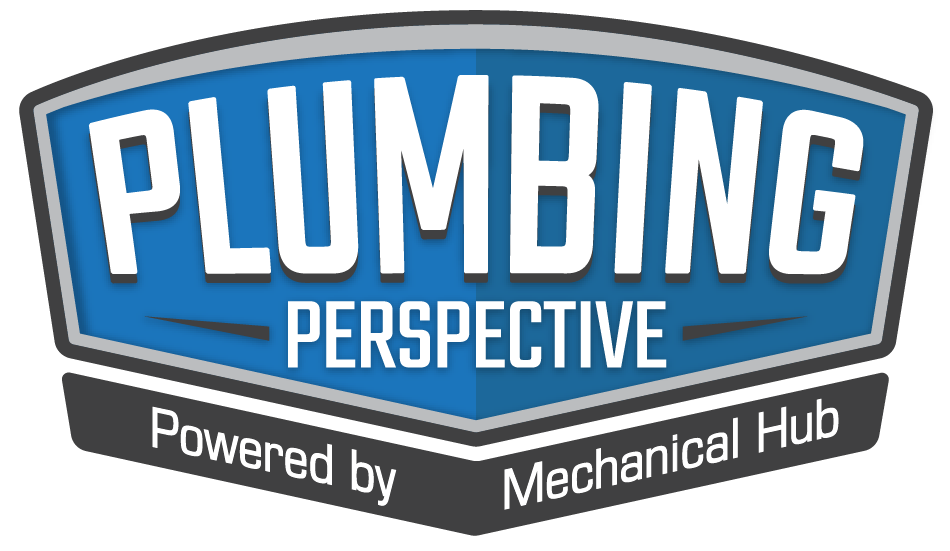Plumbing contractors know that specifying high-quality fixtures can have a direct impact on the performance and longevity of a commercial restroom. Bradley’s Verge™ faucets are engineered with precision, offering industry-leading technology, enhanced vandal resistance and long-lasting durability. Designed for optimal performance – even in high-traffic applications – these faucets bring reliability and efficiency to any Read more
water efficiency
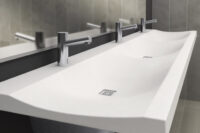
Plumbing contractors know that specifying high-quality fixtures can have a direct impact on the performance and longevity of a commercial restroom. Bradley’s Verge™ faucets are engineered with precision, offering industry-leading technology, enhanced vandal resistance and long-lasting durability. Designed for optimal performance – even in high-traffic applications – these faucets bring reliability and efficiency to any commercial setting, while looking streamlined and attractive.
Dual Sensor Technology
A key technical advantage of Verge Faucets is their patented dual sensor technology, which delivers activation accuracy. This technology minimizes frustrating false activations while conserving battery power. Contractors will appreciate the optimization of battery life, minimizing the need for frequent replacements and lowering maintenance costs.
Vandal Resistance
The faucets feature hidden sensors, nozzles, and aerators, which not only enhance Verge Faucets’ sleek and modern aesthetic but also deter tampering and vandalism. With no exposed components left vulnerable to damage, these faucets are designed to increase functionality and style in restrooms.
Bradley’s new optional 4-inch trim plates with integral rotation-resistant pins provide enhanced vandal resistance, making Verge Faucets ideal for public and high-use facilities. This added security feature ensures that faucets remain securely in place, reducing maintenance and extending the lifespan of the fixture.
Water Efficiency Features
With a selection of multiple low-flow options available, Verge Faucets allow customization of water usage to address specific requirements. Whether the priority is water conservation for LEED certification or encouraging handwashing with steady flow of water, adjustable run times can be tailored to meet facility needs.
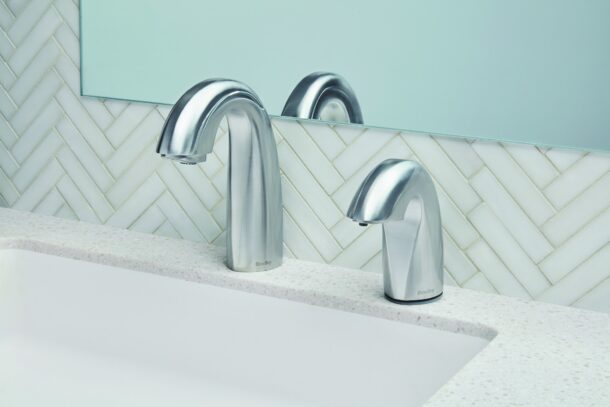
Auto Flush Improves Hygiene
To prevent stagnant water and bacterial growth, Verge Faucets feature an automatic flush function that activates every 24 hours. A manual valve override can provide extended flushing, which is especially important in healthcare environments where hygiene is critical. This feature maintains clean water lines, safeguarding against contamination and minimizing maintenance.
Durable Solid Brass Craftsmanship
Bradley, known for high-quality craftsmanship, has engineered Verge Faucets with solid brass construction, for superior durability and reliability. These faucets are designed to withstand heavy use, making them a long-lasting solution for today’s commercial washrooms.
Also consider pairing Verge Faucets with matching Verge Soap Dispensers for a completely unified handwashing design.
Power Options
Verge Faucets are designed for flexibility with AC power operation and an optional battery backup. This ensures uninterrupted performance in the event of a power outage, making them a dependable choice for even the most challenging applications.
For plumbing contractors seeking high-performance, vandal-resistant, and low-maintenance faucets, Bradley’s Verge Faucets offer a comprehensive solution. With advanced sensor technology, durable construction, and water-saving features, these faucets are designed to meet even the toughest demands of commercial restrooms while ensuring dependability and efficiency.
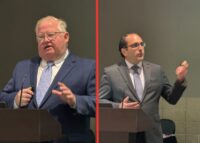
Um, yeah. With Trump ready to assume the role of President for his second term, albeit not consecutively, other than the renaming the Gulf of America, how much can we “read the room” as to changes in policies, rhetoric or general feeling moving forward to things that relate to the PHVAC industry? We recently caught Read more
Um, yeah. With Trump ready to assume the role of President for his second term, albeit not consecutively, other than the renaming the Gulf of America, how much can we “read the room” as to changes in policies, rhetoric or general feeling moving forward to things that relate to the PHVAC industry? We recently caught with Mark Velentini, VP of Legislative Affairs at the PHCC-National Association, and Charles White, VP Regulatory Affairs at the PHCC-National Association—affectionately known as the “Chuck & Mark Show” by the PHCC—as they have their finger on the pulse of DC.
MH: We can kind of gauge what sort of policies/governance may come out of Trump’s term based on his first term, but how do you think the second time around will affect the plumbing industry in general?
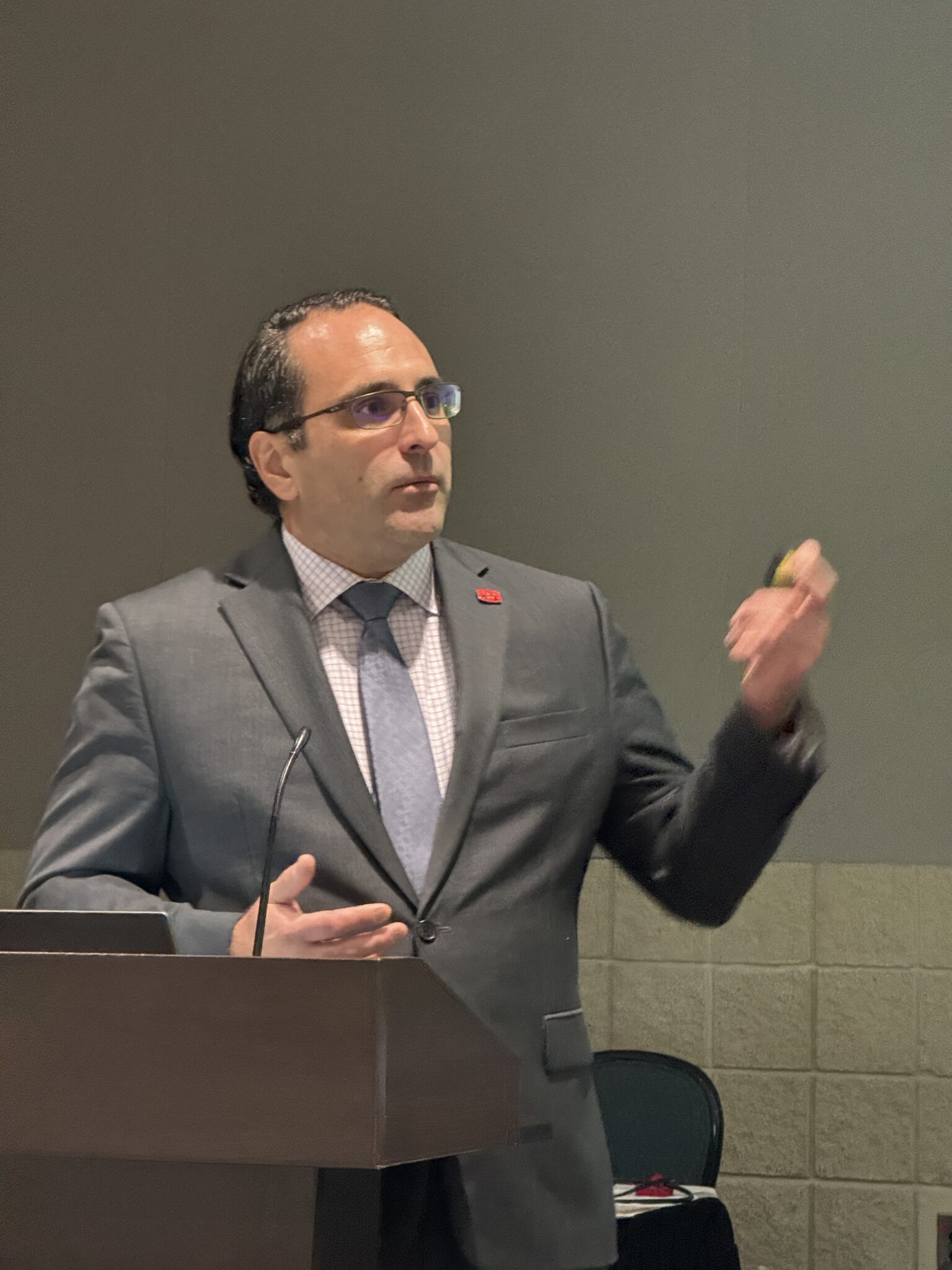
Mark Valentini
VALENTINI: A Republican Congress and administration will bode well on energy policy as PHCC members confront bans and restrictions on natural gas connections and appliances across the country. This will also bode well for tax policy as certain provisions in the Tax Cuts and Jobs Act of 2017 are set to expire which have been beneficial for many contractors, especially when considering Congress revisiting the corporate tax rate and potentially lowering it to 15% down from 21%.
MH: Does a more deregulated government mean more uphill battles for water/energy efficiency?
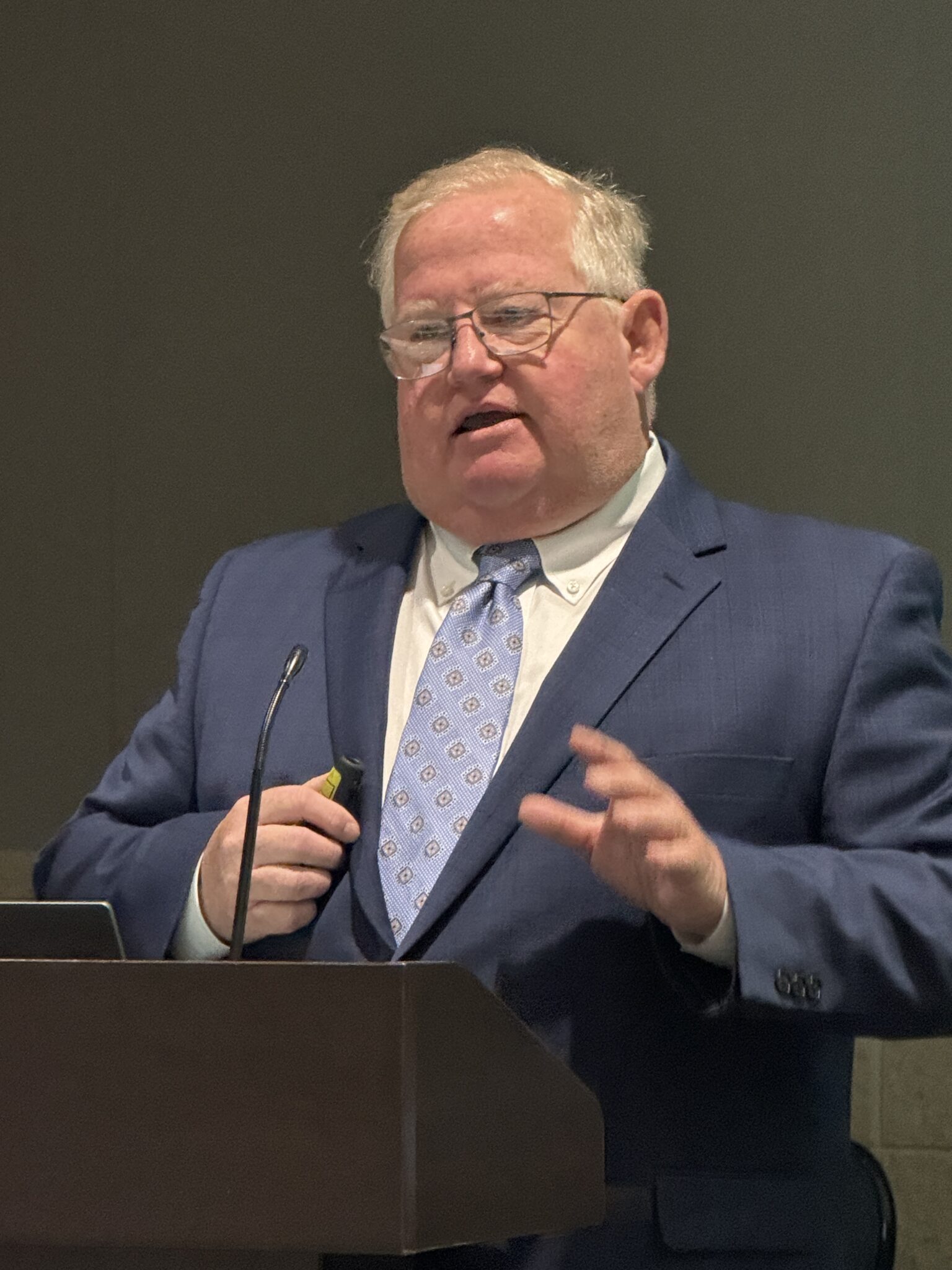
Charles White
WHITE: I think the previous Trump Administration showed us uphill battles when agencies were directed to create exempt categories like small cycle dishwashers and such. It is likely that the second Trump Administration will take these actions to the next level by moving to rewrite the underlying legislation. Having said that, the efficiency efforts will then move to the progressive states rather than being federal actions, we will probably not see much regression to less efficient standards and the high population states like California and New York will likely drive the industry to higher efficiency products.
MH: Do you think there may be changes to things like the Inflation Reduction Act or Infrastructure Bill or is that pretty much hands off at this point?
VALENTINI: It is rather early to tell, IIJA has been around for some time now and may be hard to change. The IRA has so many parts, that makes it hard to consider in one piece. Tax credits like Section 25c could be pretty safe but the HOMES and HEARS Acts may not be as safe since they represent almost $9 billion.
WHITE: Most of HOMES and HEARS programs have yet to roll out which could make them a prime target but since they have a low- and moderate-income focus, there may be an optics issue to remove those acts. The issues are complicated, but PHCC has been cautiously supportive of the IRA since much of that program flows to plumbing and HVAC contractors.
MH: What is the climate from your constituency? In other words, what are you hearing about this new election cycle—positivity, negativity or a wait and see approach?
VALENTINI: Positivity but also wait and see. PHCC must be vigilant on workforce policy as the new government may reconsider industry-recognized apprenticeships which risk watering-down training by compartmentalizing it into credentialing—contractors need skilled workers with a holistic skillset, not workers who are certified in a handful of specific tasks.
MH: How do interest rates come into play here?
VALENTINI: Lower interest rates bode well for real estate, which in turn bodes well for new construction, service, and remodeling work.
MH: From what I recall, Trump’s 1st term was pro-trades? Do you have any indication this will continue?
WHITE: While President Trump’s first term had support from the trade’s rank and file, the Industry Recognized Apprenticeship Rule received more negative public comments than perhaps any other rule. Those negative comments came overwhelmingly from those same rank and file workers. Polling data throughout the election shows that the President-elect enjoyed substantial support from skilled blue-collar workers, but his future actions must support their jobs in the workforce.
MH: Does anything change on the union front?
VALENTINI: That’s a sensitive question. I would venture to say that Teamsters and other labor groups that withheld endorsements are reading the room when it comes to their rank-and-file.
MH: Please give examples of any changes/addendums/eliminations to specific policies moving forward, if applicable. (i.e. Clean Water Act)
VALENTINI: We can expect to see legislation on tax reform and energy in the new Congress. Tight margins particularly in the House will require all Republicans to be on board to pass anything.
WHITE: It is possible that the new administration will review regulations that are currently in litigation, like the residential gas furnace rule, and perhaps decide to pull back those rules for revisions. This could also affect decisions on whether to appeal adverse court rulings such as the recent ruling against the DOL Overtime Rule.
Ontario, Calif. — Using the International Association of Plumbing and Mechanical Officials’ (IAPMO) Water Demand Calculator™ as an alternative to sizing methods in traditional plumbing codes can result in energy, carbon and water savings with no change to how residents use plumbing fixtures in their homes every day, an analysis by Arup, a global collective Read more
Ontario, Calif. — Using the International Association of Plumbing and Mechanical Officials’ (IAPMO) Water Demand Calculator™ as an alternative to sizing methods in traditional plumbing codes can result in energy, carbon and water savings with no change to how residents use plumbing fixtures in their homes every day, an analysis by Arup, a global collective of designers, consultants and experts dedicated to sustainable development, has found.
IAPMO commissioned Arup to analyze and better understand the Water Demand Calculator’s potential for sustainability savings. Arup compared the Water Demand Calculator with the Hunter’s Curve method found standard in both the Uniform Plumbing Code (UPC®) and the International Plumbing Code (IPC®) for sizing domestic hot water systems in four residential-use cases. The analysis included a single-family home, and six-unit, 45-unit and high-rise multifamily residences.
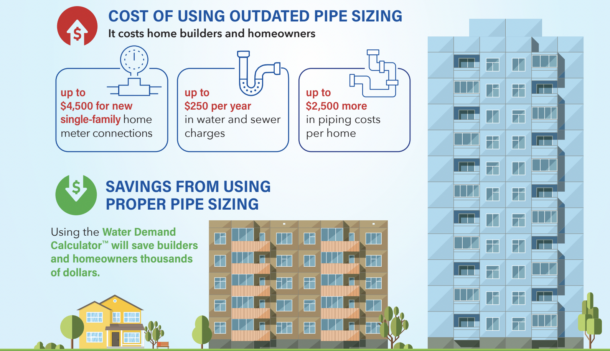
Arup’s study found that when the Water Demand Calculator is used for domestic water design for residential buildings instead of the Hunter’s Curve sizing methods, there are resulting operational energy and embodied carbon savings in all four of the use cases, as well as water savings in the non-circulating units. Water savings were demonstrated through minimized time to tap using the Water Demand Calculator sizing and range from 450 gallons to 71,000 gallons annually depending on the building size.
A single-family unit prototype showed annual water savings of 450 gallons, while high-rise residential buildings show savings in operational carbon between 73 and 84% for booster pumps and embodied carbon savings ranging from 20% to 41%. Using the Water Demand Calculator instead of the Hunter’s Curve method to size domestic water systems in high-rise residential buildings shows savings of operational carbon ranging from 2,000 to nearly 24,000 pounds of carbon dioxide per high-rise residential building, depending on grid emissions at the project site. Additionally, a reduction in pipe sizing allows for reduced heat loss through pipes.
”The Water Demand Calculator is a tool for its age,” IAPMO Vice President of Technical Services and Research Christoph Lohr, P.E., said. “With concerns of energy reduction and water savings being top of mind for many regions in the United States and the world, having the latest methodology to meet goals is vital. We greatly appreciate Arup providing IAPMO with a third-party evaluation of the potential for the Water Demand Calculator to help meet sustainability goals.”
The Water Demand Calculator is the first significant update for water pipe sizing in buildings since Hunter’s Curve was developed more than 80 years ago. The Water Demand Calculator predicts peak water demand for single- and multifamily dwellings and removes the need for assigning fixture units to plumbing fixtures and corresponding to Hunter’s probability curve. Instead, it directly calculates peak demand using algorithms based on the building size.
Contained within Appendix M of the 2021 and 2024 Uniform Plumbing Code (UPC®) and free to download, version 2.1 of the Water Demand Calculator addresses water quality issues attributed to lower flows in oversized premise plumbing while simultaneously using less water and energy, representing the most impactful innovation in pipe sizing in nearly a century. It is the result of a multiyear effort to develop a new statistically based pipe sizing method stemming from a need to address profound water safety and wasted water and energy concerns resulting from oversized water supply pipes in homes and buildings.
The entire Arup report may be viewed at https://iapmo.org/media/31469/iapmo_energy_savings_arup_report.pdf.

Opened in May 2022, GEODIS Park is one of the premier sports and entertainment destinations in the country. Home to Major League Soccer’s Nashville SC, the 30,000-seat stadium is the largest soccer stadium in the United States and Canada. Sustainability is important to Major League Soccer and its fans, so GEODIS Park set out to Read more
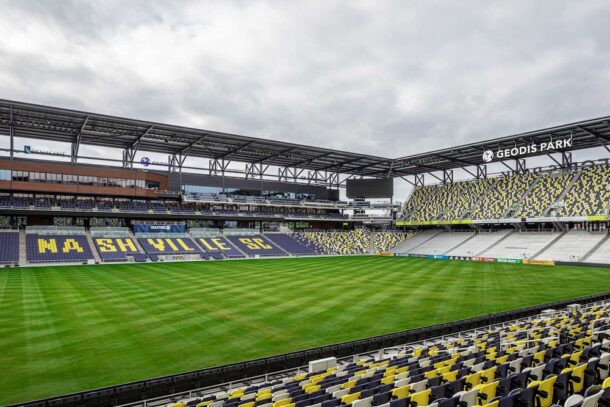
Sustainability is important to Major League Soccer and its fans, so GEODIS Park set out to feature products that not only help the environment, but also look and feel good to fans, patrons, and employees. That’s why the park specified a variety of products from Sloan—a one-stop shop of fixtures that save water, promote hygiene, and offer enhanced aesthetics throughout the restroom.
“The entire process was seamless,” said Dan Farrell, Vice President, Corporate Partnerships, Nashville Soccer Club. “The Sloan products were exactly what we were looking for. It was, from start to finish, a nice, smooth process.”
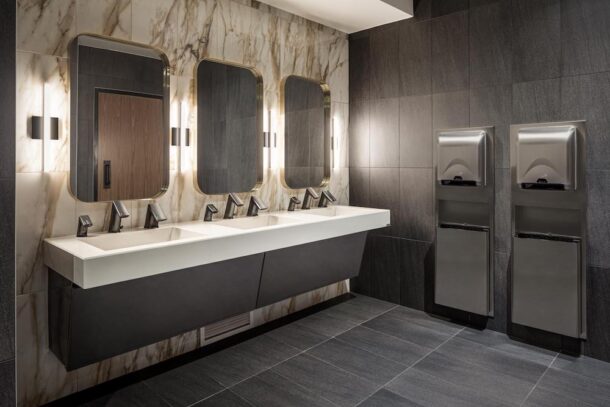
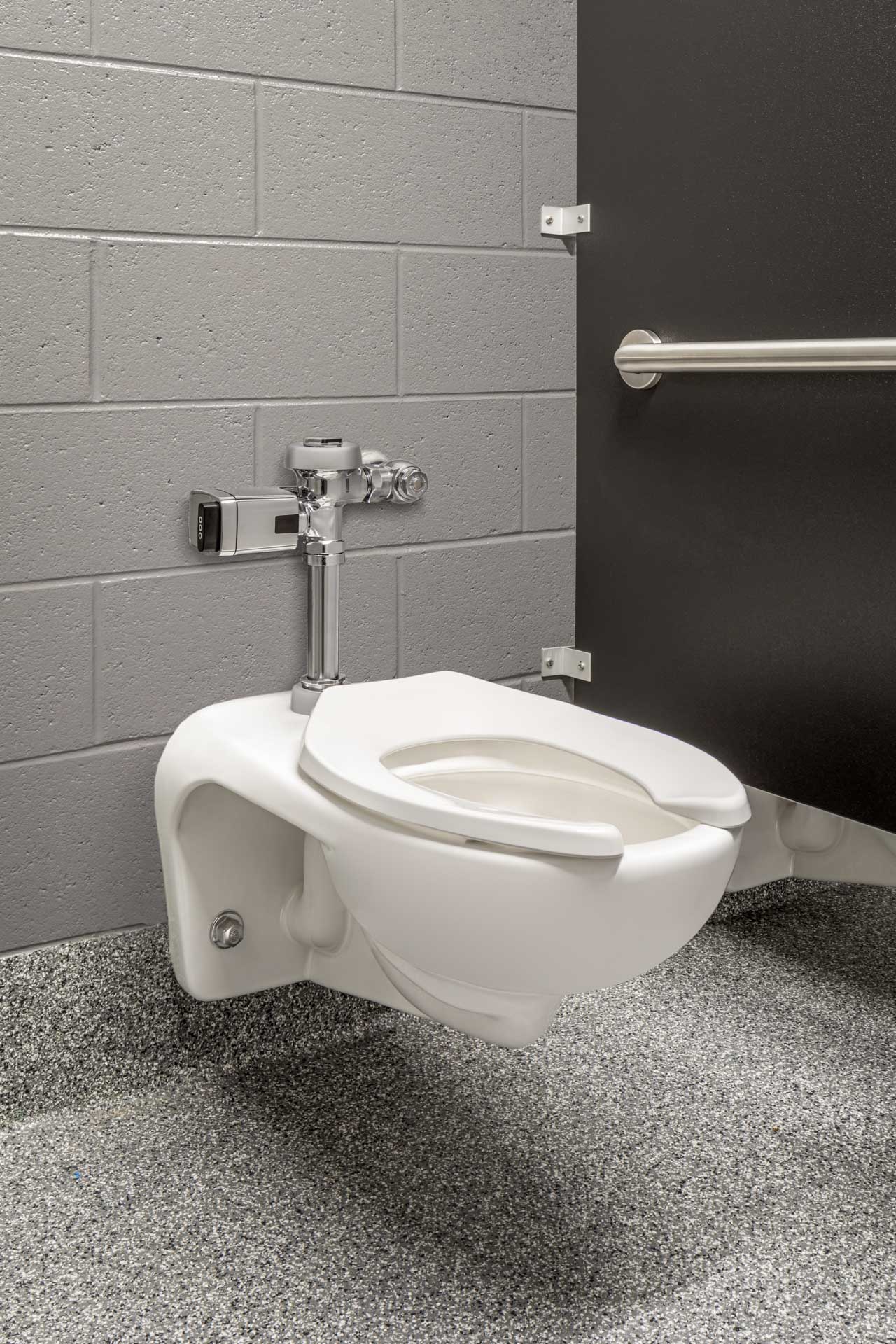
Keeping it Clean
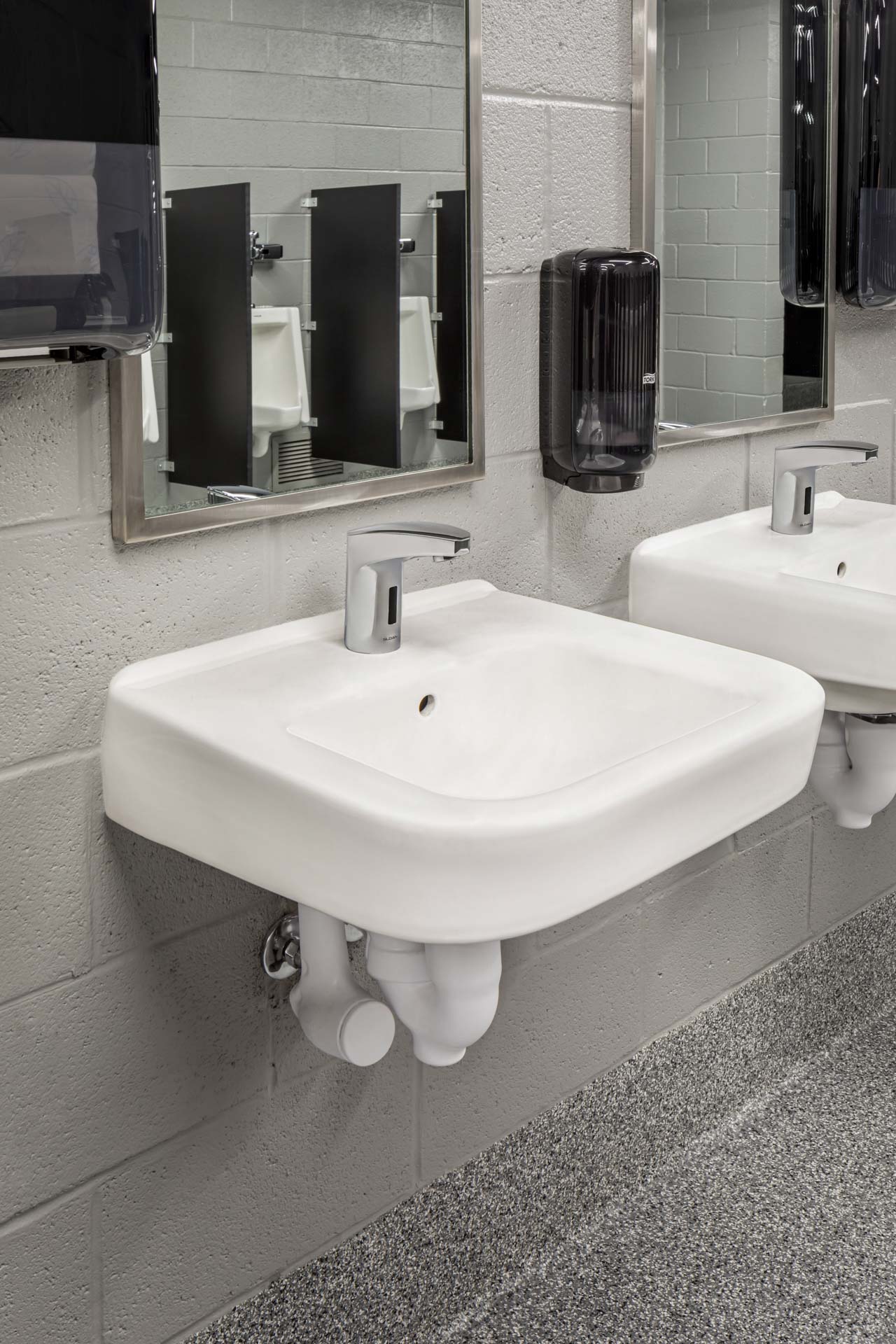
Best of the Best

San Antonio — The seventh Emerging Water Technology Symposium returned as an in-person event for the first time in four years, bringing together industry, manufacturing, water utility and government leaders from around the world. A focus of this year’s event was on resources communities require to build safe and resilient plumbing systems as well as Read more
San Antonio — The seventh Emerging Water Technology Symposium returned as an in-person event for the first time in four years, bringing together industry, manufacturing, water utility and government leaders from around the world. A focus of this year’s event was on resources communities require to build safe and resilient plumbing systems as well as meet the growing list of challenges to America’s drinking water.
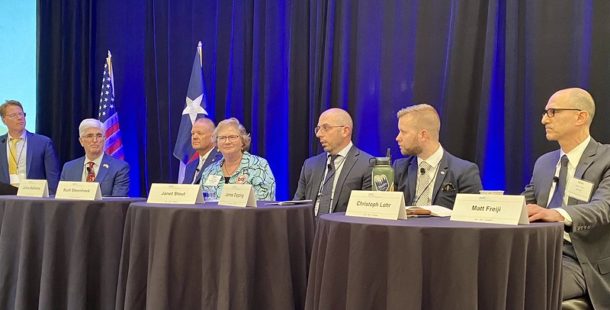
The esteemed panel on Effective Risk Management of Building Water Systems for Pathogen Control included (from l to r) Julius Ballanco, president, JB Engineering; Kurt Steenhoek, International Representative, UA; Janet Stout, Executive VP and Founder, Special Pathogen Laboratory; James Dipping, Director of Plumbing Engineering, Environmental Systems Design, Inc.; Christoph Lohr, VP of Strategic Initiatives, IAPMO; and Matt Freije, CEO, HC Info.
The May 10-11 event at the Westin Riverwalk, San Antonio was co-convened by the Alliance for Water Efficiency (AWE), the American Society of Plumbing Engineers (ASPE), the International Association of Plumbing and Mechanical Officials (IAPMO) and Plumbing Manufacturers International (PMI).
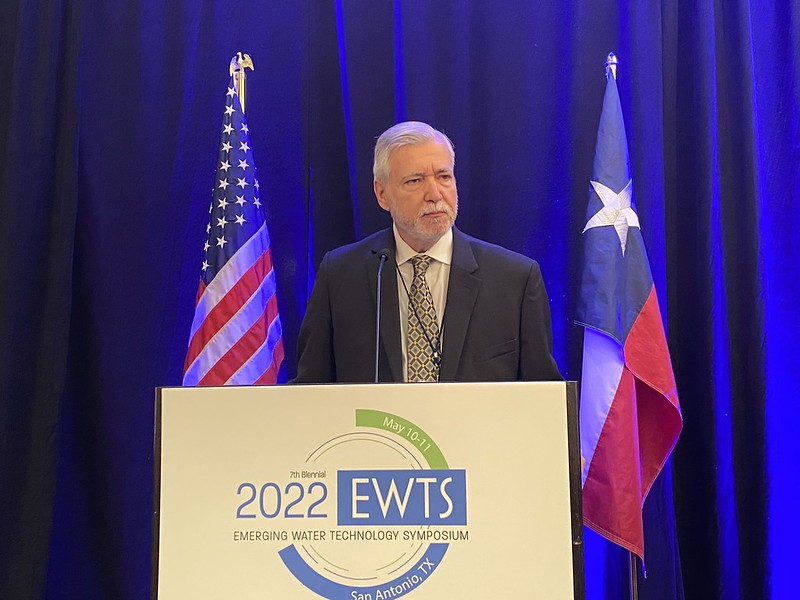
Pete DeMarco
“As an industry we have a number of high priority research needs that relate to water quality as well as water and energy efficiency,” IAPMO Executive Vice President of Advocacy and Research Pete DeMarco explained in discussing the importance of the symposium. “This year’s event brought together some of the brightest minds industry has to offer all focused on how we make our plumbing and mechanical systems safer and more resilient to meet the challenges ahead.”
In his opening remarks, DeMarco pointed to a number of accomplishments for which the EWTS has served as a springboard, including the development of the Green Plumbing and Mechanical Code Supplement (now the Water Efficiency and Sanitation Standard WE•Stand); ANSI/ASHRAE Standard 188-2018, Legionellosis: Risk Management for Building Water Systems; ASSE 12000 series on infection control and water quality, which is in IAPMO’s Uniform Plumbing Code (UPC®); and IAPMO’s Water Demand Calculator, whose second version was released in 2020.
“This symposium provides a much-needed platform for stakeholders across the industry to gather, discuss the latest research, and then discuss how we can take action,” he said. “It is a highly valuable event, and I look forward to seeing it continue to grow in the future.”
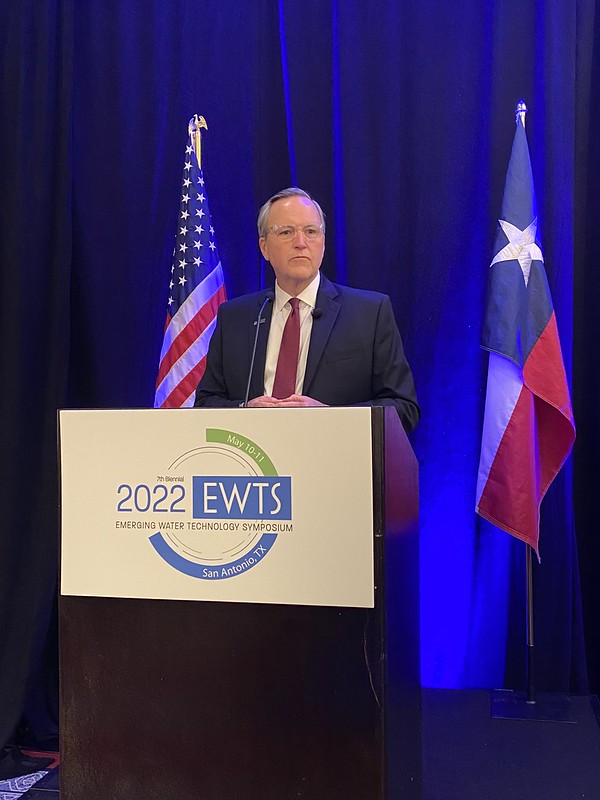
Kerry Stackpole
PMI CEO Kerry Stackpole spoke at the event and said the relationships between the organizations represented at EWTS had likely never been more important than they are now. He said that while the best and brightest among us devised medical solutions to the COVID-19 pandemic, the plumbing industry also played an important role.
“What’s also important is how our industry responded,” he said. “Our industry’s experience and our focus became touchless faucets, antimicrobial surfaces, water purification systems, all kinds of energy-efficient devices focused on safe and responsible plumbing. We all had a contribution to make and I think our industry stepped up.”
Stackpole said wildfires, flooding and drought that different regions of the United States are experiencing put those in the industry in a position to shape the future.
“Your active engagement here, in your communities back home, and in the marketplace of ideas, where we will have opportunities to share ideas with one another, will make all the difference,” he said. “You actually are able to turn the dial on this, and I think that’s really exciting.”
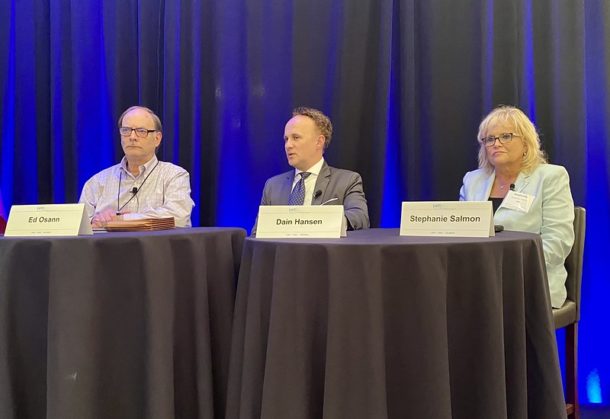
A day 2 panel saw (from l to r) Ed Osann, Senior Water Policy Analyst, NRDC; Dain Hansen, Executive Vice President, Government Relations, IAPMO; and Stephanie Salmon, Washington Representative, PMI, talk about the implications of the Infrastructure Investment and Jobs Act on Drinking Water and Wastewater.
This year’s keynote speakers were Robert Puente, president and CEO of the San Antonio Water System (SAWS), and Don Johnston, senior operations director, Indonesia, for Water.org.
Puente’s presentation looked at three ways in which SAWS, which serves 2 million customers over four counties, uses innovation to deliver water to its customers: advanced metering deployment, “smart” manhole covers, and conservation.
“It’s all about innovation,” he said. “And I think if you talk to our employees, although they will tell you that it’s their idea, we know that they got their idea from coming to events like this. Every good idea, you should expect it to be stolen, to be used by someone else, and you should be flattered by that. I think anything that you look at here started somewhere else, and we went to conferences in other cities and were able to bring back the ideas to SAWS to really get the innovation aspect in this.”
In delivering his keynote address remotely from Jakarta, Indonesia, Johnston spoke about the global water and sanitation crisis’s impact on low-income households — one in nine people lack access to safe water, one in three do not have access to a toilet — and some potential solutions. Working with financial institutions and water utilities, as well as sister company WaterEquity, Water.org helps bring affordable financing to people in need of water.
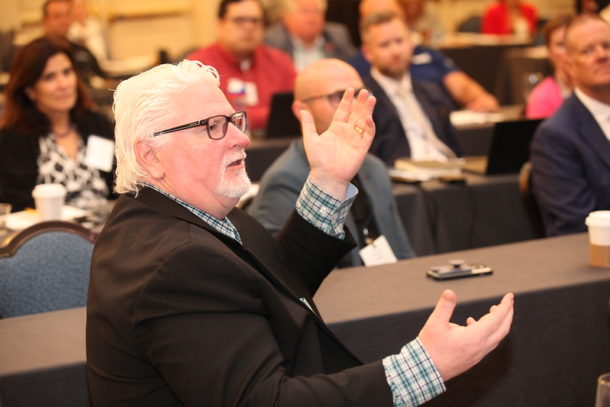
The Hub’s John Mesenbrink asks the hard-hitting questions during the symposium.
“In about 19 years of work on the ground, we’ve seen water and sanitation access reach more than 45 million people through more 10 million microloans disbursed to households with capital of $3.7 billion mobilized,” he said.
In his presentation, Phillip White, manager of plumbing and mechanical inspections for the city of Vancouver, British Columbia, shared how his city addressed the problem of insufficient sewer capacity when it came to capturing large amounts of rainfall through water reuse technologies. One development, the Oakridge Centre, utilized the IAPMO Water Demand Calculator and is expected to have the largest non-potable water system in North America.
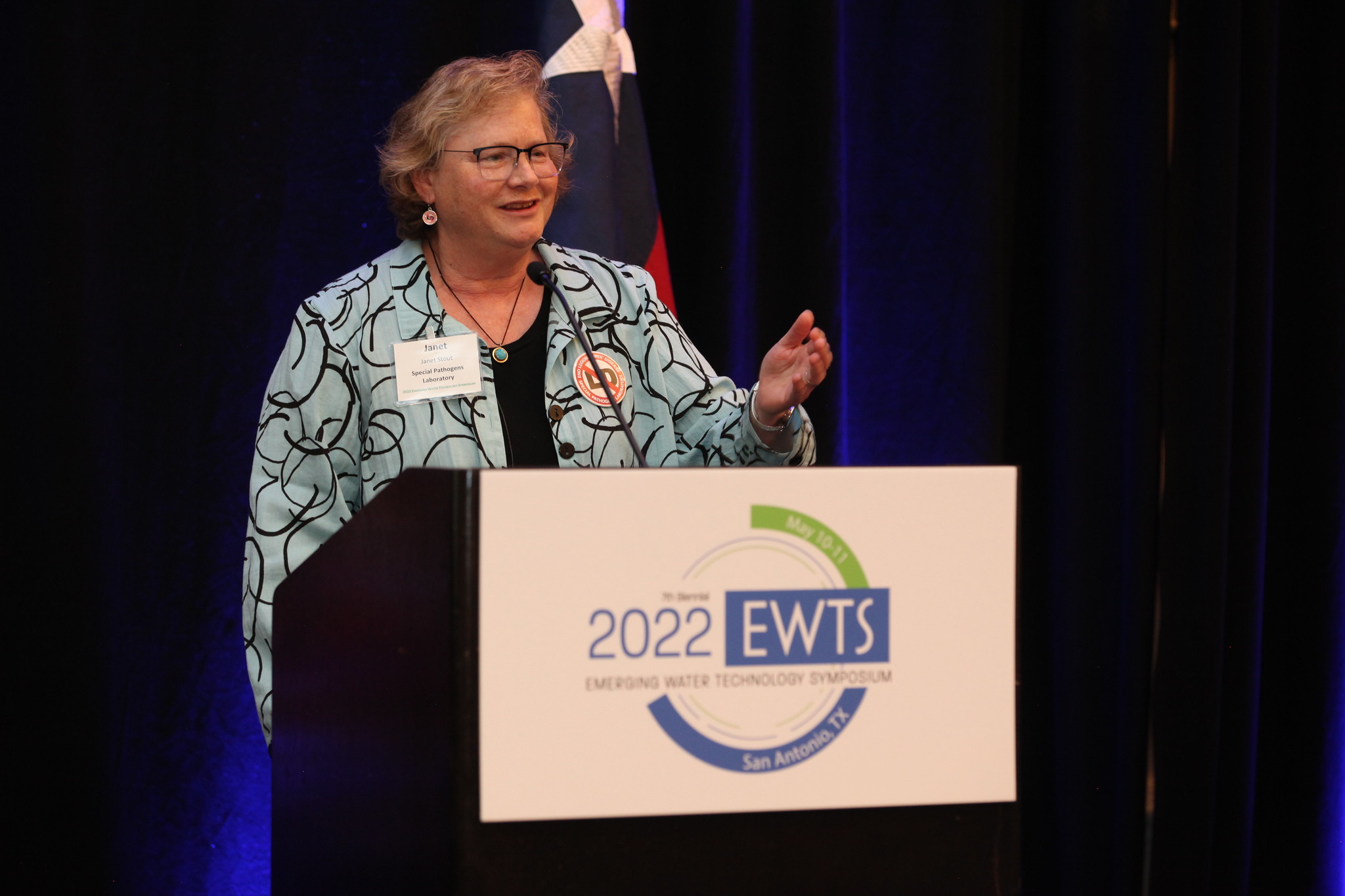
Janet Stout
Another speaker, Special Pathogens Laboratory Executive Vice President/Founder Dr. Janet Stout, looked at approaches and products for mitigating the risk of Legionellosis in point-of-use and point-of-entry building water systems. Improved water management requires knowledgeable Legionella prevention and water service providers, which can come from certification to ASSE/IAPMO/ANSI 12080 for Legionella Water Safety and Management Personnel.
IAPMO will provide sessions from the EWTS on-demand in the near future. To be notified when they are available, register at www.ewts.org/2022-ewts.
